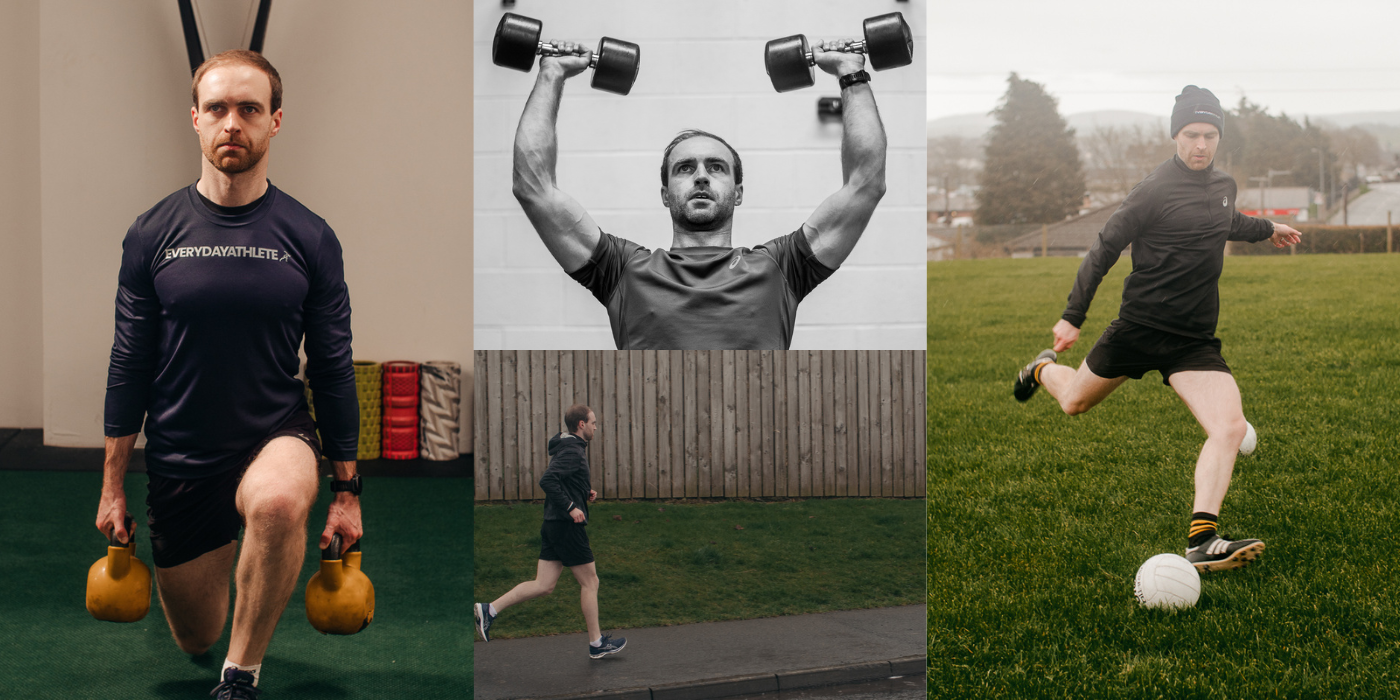Lads often (apologetically) apply to work with me saying, "I know it's a bit vain, but I'd like to have a 6-pack to go along with performance improvements."
This is in spite of most of my testimonials focussing on both areas, and every social media platform and webpage of mine saying "Working with everyday athletes to improve body composition AND performance."
That shows the level of stigma athletes can feel about admitting they also have body composition goals.
It's strange, because if we're being honest, we all want a body that reflects the level of work we put into training and nutrition, even if performance is also a goal.
But balancing both can be difficult.
You may have tried losing weight, but ended up eating too little, affecting your energy levels and recovery.
You may have tried increasing food intake to fuel up for training and matches, only to realise you ended up adding a few unwanted pounds.
You might have tried a bodybuilding program, only to realise performance wasn't improving.
Or you may have done many Strength and Conditioning programs, but never seen the body composition improvements you wanted.
From working with 100s of athletes on addressing these issues, there are 3 things I now see as critical to achieving both your body composition and performance goals.
1. Manage Your Progress Expectations (Not rapid, not slow, but steady progress)
Most approaches fail because they're too extreme.
You want to lose a few kg, so you cut out all carbs, stop eating sweets, and start running an extra 3 sessions per week.
You see great progress on the scale, and the belly is starting to go away.
But 2 weeks in, you realise that you're struggling to keep going to the final whistle, and you're starving all the time.
You're delighted that you're seeing fat loss, but you know you can't keep it going at this rate.
Ultimately, you give up, either not keeping at it long enough to see progress, or seeing some progress and undoing it all after you go back to your old ways.
What if instead, you were willing to make slightly slower progress, but this allowed you to do so whilst still performing and recovering well, and not being hungry all the time?
If you're willing to make that small trade-off, adjusting your progress expectations from rapid to steady, you'll ultimately see more progress, because you're able to stick to it for longer.
Not only that, but you'll also be able to fuel yourself along the way, meaning your performance doesn't suffer.
Walking that fine line can be tough, but the first step is the next point.
2. Get Accurate with Your Nutrition (Enough fuel for the work required. Not More. Not Less.)
So you've accepted that this time around, you're going to avoid the extremes, and instead, find that balance between fuelling and fat loss.
Getting accurate with how much food you're consuming is going to be key.
Consider trying to save money to buy a new car.
You could simply start spending as little as possible, cutting out all the things you usually enjoy, and hope that your bank account has increased by the end of the month.
Or you could commit to keeping to a specific spending budget, allowing you to spend on the things you enjoy up to that amount, and putting a specific amount aside each month for the car savings.
Either could work, but it's clear which one is more likely to you getting that car you're after.
The same is true with nutrition.
Knowing how many calories you're eating will allow you to adjust towards that sweet spot that has you losing weight, whilst keeping you energised and recovering properly.
Without that accuracy, you're shooting in the dark.
This is also true for muscle gain, where you want to find that balance between eating enough to see the scales going up, but not so much that it's leading to excess body fat gain.
Even strictly from a performance point of view, having this level of accuracy allows you to adjust your intake for training vs. rest days, for example, where needed.
3. Be Smart with Your Gym-work (Train like an athlete. Indulge your inner bodybuilder.)
I've seen both types of athlete in the gym:
The lad who does the bodybuilding split, but leaves himself slower and less agile on the pitch.
And the lad with the fancy plyometrics and bosu-ball workouts who doesn't fill out his jersey sleeves.
Either approach is fine, as long as you're seeing the progress that YOU want.
But realistically, most lads want both, and each of the athletes above could learn something from each other.
My general advice for someone in this position is to train like an athlete, but indulge your inner bodybuilder.
That is, a lot of your gym work should be focused on getting stronger at the compound lifts and working on things like power output and athletic movement.
But that doesn't mean you can't construct your workouts to allow for some higher-rep chest-work or getting a bicep pump.
Of course, this should be programmed strategically, and the focus will sway one way or the other based on the time of year.
But the point is that you can approach this problem in a way that will allow you to not only become stronger and more powerful in sport, but will also allow you to feel great taking your top off on your next beach holiday.
Article Written By Conor O’Neill
Conor O’Neill is a Nutritionist, Strength & Conditioning coach, Psychologist, and Author.
He has helped 1000+ everyday athletes to pursue excellence in their physique and performance through optimising their nutrition, training, and psychology.
You can find out more about The Everyday Athlete Program by going to everydayathleteprogram.com/coaching.

